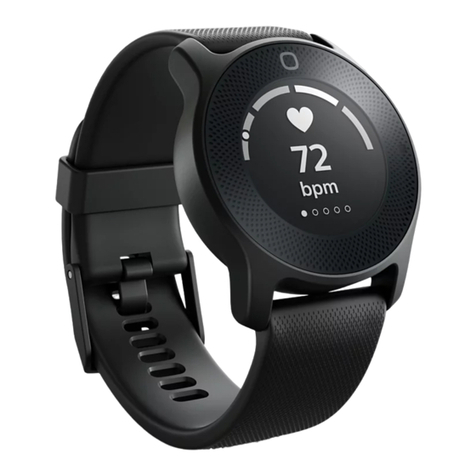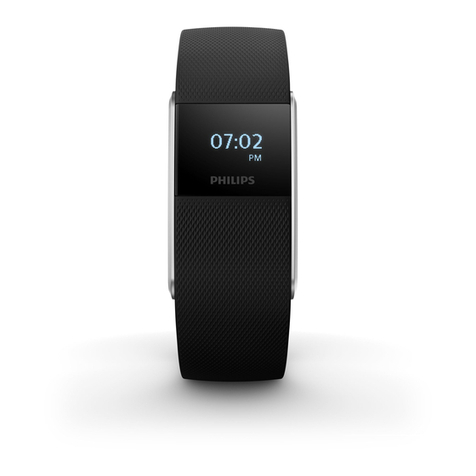8 9
Intended use
The medical purpose is to measure and track the vital physiological parameter heart
rate and movement, and derive resting heart rate and energy expenditure of adults at
risk of getting a lifestyle related chronic disease or adult patients suering lifestyle related
chronic disease, specically cardiovascular disease and diabetes type 2. Investigation
of these parameters is used in the assessment of the physiological state of a person
and their daily physical activity level. For people at risk of these lifestyle related chronic
diseases or patients with a pre-existing condition, the continuous monitoring of these
parameters can give insight in changes of heart rate and daily physical activity.
The non-medical purpose is measurement of: steps, heart rate recovery, resting
respiration rate and sleep patterns, and providing: automatic activity recognition
(cycling, running, walking), a heart rate zone indication, a VO2max estimate and
sedentary behavior alerting, for wellness purposes.































